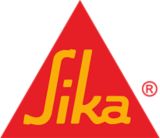
Sikaflex®-255 FC
Fast curing direct glazing adhesive for commercial vehicles
Sikaflex®-255 FC is a 1-component, high-strength adhesive for commercial-vehicle glazing and glass replacement applications. It provides a long open time and ensures safe application even in warm conditions. Sikaflex®-255 FC is compatible with Sika’s black-primerless bonding process.
- Fast-curing
- Very good processing properties
- Wide adhesion range on most relevant substrates


